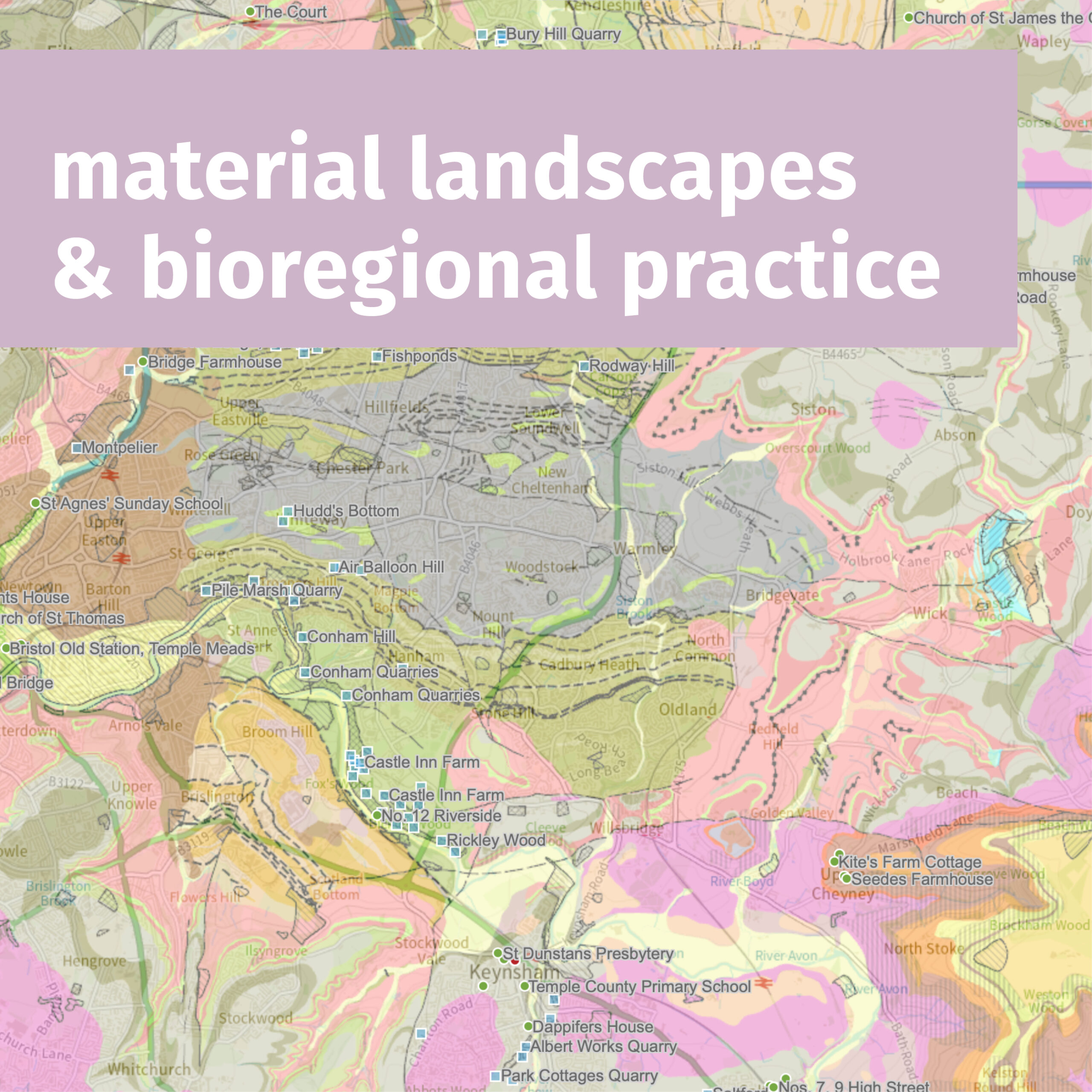
The last of the Terrain Talks – a series reflecting on regional and rural architectures and landscapes was held in Totness, Devon (2023) and focused on bio-regional practice. It brought together Ken de Cooman from BC architects and Jez Ralph from Evolving Forests who each presented how they were engaging with landscapes and material sourcing in different ways.
Jez Ralph talked about how having trained as an archaeologist he saw the material landscape as a cultural landscape where people have constantly interacted with nature. We know, he said, that Neolithic farmers made their way across the Somerset Levels on elevated paths fashioned from massive sawn tree trunks supported on smaller posts from coppiced woodland. In Evolving Forest’s work for the Woodland Trust and National Trust they are mapping and evaluating the species diversity of forests and looking for ‘problem and opportunity’ timbers that could be more actively used and regenerated to both sustain woodland diversity and produce material resources close to where they are needed. Dartmoor Future Forests looks at bringing underused sustainably grown UK hardwood into the supply chain. With Buckland Timber and other manufacturers, they are prototyping the use of these timbers in construction. The challenges are how to make resources available or searchable so that they can become as accessible as ordering timber from a local builder’s merchant. Jez asked was a bioregion a river catchment – perhaps it’s a river catchment and its mosaic of habitats and settlements. Jez talked about being proactive about nature recovery but also considering the need for resilience to a changing climate.
Ken de Cooman from BC Architects talked about the challenges of material scarcity where so many natural resources have already been used (and the supply chains for those yet to be used are still destructive). He said for BC in its three areas of endeavour – architecture – research and materials circularity was not such a miracle but something they had learnt to do from the first buildings they had made. For Lot 8 in Arles they had worked with and for their client Atelier Luma and with Assemble to restore a former industrial building as a new material production centre. They started by mapping the material resources available on site and nearby – looking for those that are ‘by products of human activities’. From this research they identified waste they could use from stone quarrying and rice, sunflower and algae production. BC’s intention is to be agile prototyping new materials for projects and to make new sustainable products at scale. Being aware of Brussels’ distinctive geology BC Materials made an agreement with the city council to take waste from site excavations in the city – using waste soil and sand to make bricks and a range of building products – partnering with manufacturers to meet growing demand and bring down prices.
As outlined in my post ‘Forests, fields, people and regenerative construction’ to make the future global building stock into a regenerative carbon-sink the menu of natural materials commonly used needs to get wider. Fast growing biobased materials have a more rapid impact than timber and can sometimes grow in less favourable conditions. A study of the potential for Circular Biobased Construction in the North East and Yorkshire by Material Cultures and Arup identified the opportunities at a landscape scale. A research project is just starting at the Universities of Bath and Cardiff looking at biobased solutions to energy efficiency and resilience of existing housing.
As both Evolving Forests and BC Architects demonstrate there is also a value in better understanding the material landscape of a project – what underused resource and waste streams are nearby? Local Works Studio (an earlier Terrain Talks contributor) have also made this part of their practice notably for the Gold Medal winning Sarah Price garden at Chelsea Flower Show in 2023 where they mapped available materials between the plant nursery and the Chelsea or their research for a project in Devon that mapped natural and waste resources to inform material design. As a starting point The Building Stones Database for England has a detailed geological map that locates historic buildings alongside quarries providing an amazing resource for understanding the material tone and context of a place.
The King’s Foundation and University College of Estate Management (UCEM) have started a 2 year KTP research project to set up regional building hubs (RBH) bring together regional landowners, SME’s, supply chains aiming to ‘develop model for regional hubs that is de-risked, skilled up, competitively priced and funded’. They are thinking of creating digital pattern books and building solutions aimed at standardization of plans but variation in the ‘regional overcoat’ that may be open sourced and linked to local supply chains. Similarly but differently Architecture 00’s Wiki House and Dark Matter Labs Free House looks at open sourcing the design and digital fabrication of exemplar zero carbon homes – making these affordable through civicaly governed finance.
Photo: Extract from the Building Stones Database.
… … …